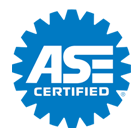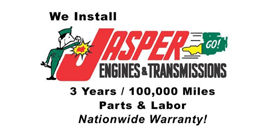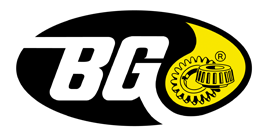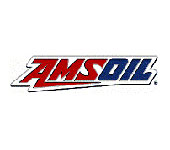AUTONET TV
Archive for December 2021Not Too Hot and Not Too Cold (Temperature Gauge)Posted December 26, 2021 10:29 AMYou know your body temperature is supposed to be 98.6 degrees F, 37 degrees C. Your vehicle has a normal temperature, too, and if you pay attention to it, that can save you some big headaches down the road. Many vehicles have a temperature gauge on the dash that takes the temperature of the engine's coolant. Some have a thermometer symbol, some read C-H (cold to hot). Many will have a red zone that shows when water temperature is getting into the danger zone. Others are digital and have a red warning light that signals overheating. And some vehicles have a light that goes on when the engine temperature is out of the normal range. If your vehicle has a gauge, pay attention to it. If you need help locating it, ask one of our Hill's Auto Repair, Inc. experts to give you a quick explanation. Chances are when the vehicle has been running for 15 minutes or more, the temperature gauge will settle into its own "normal" zone, often just below the midway point. If you have a digital readout, remember what that "normal" temperature is. Here's why. At any point when you're driving, the temperature gauge is the quickest way to get a sense that the engine is running the way it should, a quick health checkup, as it were. Say you're on a 3-hour trip, glance at that gauge every hour or so. It should always be in the same spot. If it starts to move one way or the other, you may be able to catch a problem before it gets serious. Pay special attention to it moving into the hot zone. The needle on the gauge is the easiest and least distracting way to see an engine heating up, but on a digital gauge, start paying attention if the temperature reaches 240ºF/115ºC or more. Remember, though, that just because the gauge reads "hot" doesn't mean your engine is on the verge of burning up. It could be a bad sensor and the engine will be at a normal temperature. But it also could be a failing water pump, coolant leak or thermostat. By pulling off the road and observing your engine, it will give you a pretty good idea if it's running hot or not. If the gauge is too "cold," it could be a broken gauge or thermostat sticking open. Usually being in the cold range isn't as worrisome, but you should have it checked out since other systems may be affected. Heat is one of a vehicle's worst enemies, especially when it comes from within. Know your vehicle's normal temperature and keep an eye on it.
The Right Stuff (Choosing Replacement Parts)Posted December 19, 2021 10:00 AMLet's face it. Vehicles are complicated machines, each having thousands of parts. And since they're subjected to heat, cold, vibrations, bumps and much more, these parts wear out and need to be replaced. When your service advisor says you need a new part, you may have many options. Let's say you need a new muffler. One choice would be to get exactly the same part that was installed when the vehicle was manufactured. The advantages are that it will perform the same way as the one it's replacing and will likely last about the same amount of time as the original. Some mufflers are made by the same companies that supplied the automaker when your vehicle was new (they call that an OEM part—Original Equipment Manufacturer). And often those are the same as the part you'd buy from a dealer. A reputable vehicle service facility will know which ones these are because they replace mufflers all the time and do their homework. The good news is there are many different mufflers available from several manufacturers. These are called aftermarket parts. Some of them may use different metals or a different construction technique. Some may sound a little sportier while some may make your engine perform better. Your service advisor will discuss what your driving habits are and help choose the part that's best for you. You may be able to get a part that's better than the one originally installed. Here's an example. A repair shop discovered one owner's vehicle had developed cracks and leaks in the hoses that attach to the heater core. They were made of plastic, and heat and pressure had caused the originals to crack. The service advisor recommended they replace it with an aftermarket part that was made of aluminum instead, one that was more durable than the original part. Some aftermarket parts cost more, some cost about the same or less. Depending on how and where you drive and what you want out of your vehicle, you can decide to buy more economical parts which might be the best fit for your needs. Or you may decide to upgrade to a better, more expensive part. Hill's Auto Repair, Inc. The New Blade in TownPosted December 12, 2021 7:52 AMIf your windshield wipers are streaking and chattering when you turn them on in the rain or snow, it's time for a little "blade renewal." And when it comes to new wiper blades, there are some new designs that are worth a look. One of the latest is called the beam blade. It's different than conventional blades you might be used to. Instead of a metal frame and a rubber blade that slides in the frame on a track, the beam blades have an enclosed spring-steel band that allows the rubber wiper to conform to the windshield glass shape much more tightly. There are some key advantages to beam blades, which is why many vehicle manufacturers are making them standard on their latest models. For one thing, they work well in all weather conditions, including the heat of summer and the icy, snowy cold of winter. Since there is no separate frame, snow and ice can't form in gaps like conventional wipers and prevent the blade from clearing your windshield. Many beam blades also have a mini "wing" on them. It uses the air moving over your windshield to create a little extra downward pressure that presses the blade even more tightly against the glass. The faster you go, the more firmly the blade can sweep off moisture. That means a clearer view. Beam blades are an upgrade that can add to your vehicle's overall safety with that increased visibility. The best thing is to discuss wiper blades with your service advisor to see if it's a good choice for you and your vehicle, keeping in mind the type of driving you do and the climate you live in. Remember that when it comes to wipers, it's important that you are using blades that are designed to fit your vehicle and that they are installed correctly. Hill's Auto Repair, Inc. Greeted by a Screech (Loud Noise when Starting Vehicle)Posted December 5, 2021 9:22 AMNo one likes to be greeted in the morning by having someone screech at you. The same goes for a loud, high-pitched noise your vehicle greets you with every time you start the engine. If you're wondering if that's normal, no, it isn't. And it is worth getting checked out. The good news is that it might be nothing serious. Then again, it may be. The first things to suspect any time you hear a high-pitched sound coming from the engine are belts. They have tension on them and they're trying to turn lots of different pulleys, pumps and other equipment the engine needs to work properly. The noise could come from the belts starting to wear out and dry out. If one of those belts breaks at an inopportune time, not only can it strand you somewhere, the damage to the engine could be very expensive to fix. Other things that will cause a high-pitched sound are the pulleys and tensioners. The tensioners keep the right amount of pressure on the belts and some pulleys contain rubber that dampens engine vibrations. The rubber in the pulleys can crack or deform with age, which prevents them from working correctly and may cause your belts to wear out. A technician will check to see if the belts are worn or cracked. He or she will also check the tension on the belts, the condition of the pulleys and whether all components are aligned the way they should be. Sometimes, the noise is nothing major to worry about, but it's still worthwhile to rule out any problems that have cropped up now or may appear in the future. You'll have a properly running vehicle that sounds like its engineers intended… quiet and smooth.
| ||
SearchArchiveSeptember 2011 (18)October 2011 (3) November 2011 (5) December 2011 (4) January 2012 (5) February 2012 (3) March 2012 (5) April 2012 (4) May 2012 (5) June 2012 (4) July 2012 (4) August 2012 (5) September 2012 (4) October 2012 (5) November 2012 (4) December 2012 (4) January 2013 (4) February 2013 (4) March 2013 (4) April 2013 (4) May 2013 (5) June 2013 (4) July 2013 (4) August 2013 (4) September 2013 (5) October 2013 (5) November 2013 (4) December 2013 (4) January 2014 (5) February 2014 (4) March 2014 (4) April 2014 (4) May 2014 (5) June 2014 (4) July 2014 (4) August 2014 (5) September 2014 (4) October 2014 (5) November 2014 (4) December 2014 (5) January 2015 (4) February 2015 (4) March 2015 (4) April 2015 (5) May 2015 (2) June 2015 (6) July 2015 (4) August 2015 (5) September 2015 (4) October 2015 (5) November 2015 (4) December 2015 (3) February 2016 (1) March 2016 (7) April 2016 (4) May 2016 (5) June 2016 (4) July 2016 (5) August 2016 (4) September 2016 (4) October 2016 (4) November 2016 (5) December 2016 (4) January 2017 (5) February 2017 (3) March 2017 (5) April 2017 (4) May 2017 (5) June 2017 (4) July 2017 (5) August 2017 (3) September 2017 (3) October 2017 (5) November 2017 (4) December 2017 (3) January 2018 (5) February 2018 (4) March 2018 (4) April 2018 (4) May 2018 (5) June 2018 (4) July 2018 (5) August 2018 (4) September 2018 (4) October 2018 (4) November 2018 (4) December 2018 (5) January 2019 (5) February 2019 (1) March 2019 (4) May 2019 (2) June 2019 (5) July 2019 (2) August 2019 (2) September 2019 (3) October 2019 (5) November 2019 (4) December 2019 (5) January 2020 (5) February 2020 (4) March 2020 (5) April 2020 (1) May 2020 (2) June 2020 (1) July 2020 (1) August 2020 (5) September 2020 (4) October 2020 (4) November 2020 (5) December 2020 (4) January 2021 (6) February 2021 (4) March 2021 (4) April 2021 (4) May 2021 (5) June 2021 (4) July 2021 (4) August 2021 (5) September 2021 (4) October 2021 (5) November 2021 (4) December 2021 (4) January 2022 (6) February 2022 (4) March 2022 (4) April 2022 (4) May 2022 (5) June 2022 (4) July 2022 (5) August 2022 (2) September 2022 (4) October 2022 (5) November 2022 (4) December 2022 (4) January 2023 (5) February 2023 (4) March 2023 (4) April 2023 (5) May 2023 (4) June 2023 (4) July 2023 (5) August 2023 (4) September 2023 (2) October 2023 (1) January 2024 (1) February 2024 (4) | CategoriesTires and Wheels (42)Maintenance (59)Warranty (2)Fuel System (48)Exhaust (12)Differential Service (4)Cabin Air Filter (8)Air Conditioning (17)Steering (16)Fluids (17)Cooling System (19)Shocks & Struts (11)Trip Inspection (4)Brakes (22)Older Vehicles (4)Service Intervals (10)Alignment (16)Monitoring System (3)Dashboard (3)Inspection (10)Service Standards (13)Windshield Wipers (9)Parts (8)Transmission (11)Drive Train (9)Safety (6)Timing Belt (6)Battery (20)Automotive News (8)Tire Rotation and Balancing (4)Headlamps (6)Diagnostics (5)Diesel Maintenance (2)Engine Air Filter (2)Suspension (3)Winter Prep (7)Keys to a long lasting vehicle (4)Fuel Economy (10)Auto Safety (6)Serpentine Belt (6)Alternator (6)Emergency Items (1)Check Engine Light (6)What Customers Should Know (81)Fuel Saving Tip: Slow Down (2)Wheel Bearings (1)Customer Detective Work (1)Oil Change (7)Safe Driving (1)Tires (10)Water Pump (1)Winter Tires (1)Spark Plugs (2)TPMS (3)Brake Service (4)Fuel Pump (1)PCV Valve (2)Transfer Case Service (1)Shocks and Struts (1) | |










